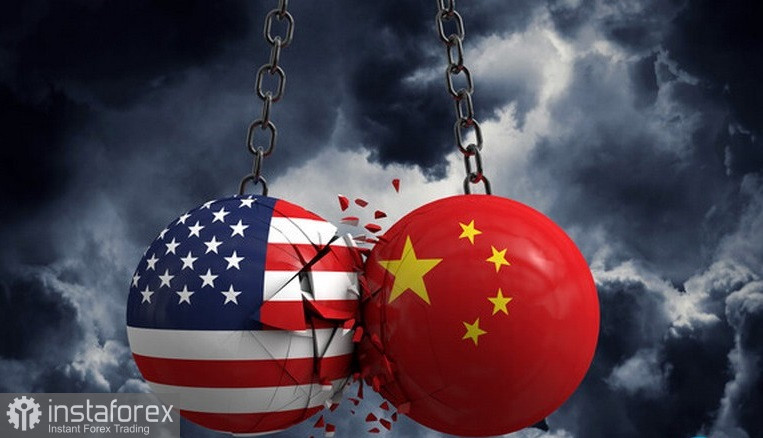Just as the market began to speculate that the US and China might finally reach an agreement on the new issue related to rare earth metals, Trump and Xi have sparked a new confrontation.
It became known that China has imposed restrictions on five American subsidiaries of Hanwha Ocean in response to US investigations into China's maritime, logistics, and shipbuilding industries.

After Trump indicated that he was ready to make a deal with Beijing, US Vice President J.D. Vance stated that the outcome would depend on China's reaction. Beijing's response did not take long. The Chinese Foreign Ministry quickly made it clear that China's next steps would depend on Washington's actions, although it has already taken measures it considers retaliatory.
"If the United States continues to follow its erroneous course, China will firmly take the necessary measures to protect its legitimate rights and interests," — said Foreign Ministry spokesperson Lin Jian during a regular briefing in Beijing.
US Treasury Secretary Scott Bessent said on Monday that he believes a meeting between Trump and Xi Jinping "will still take place," noting that there had been substantive communication over the weekend. Meanwhile, he expects meetings between US and Chinese officials this week, as well as moves by the Trump administration to rally US allies to pressure Beijing — warning of direct retaliatory measures of "brute force" if China fails to act.
"This is China's war against the whole world," said Bessent. "They've aimed a bazooka at the supply chains and industrial base of the entire free world. And, you know, we're not going to tolerate that."
Many economists disagree on which side holds greater leverage, but many believe that China's export sector could withstand US tariffs of around 50%. This resilience is supported by several factors, including the diversification of export markets, the ability of Chinese manufacturers to reduce production costs, and the active use of state subsidies to maintain competitiveness. However, this resilience is not unlimited, and higher tariffs could have tangible consequences for the Chinese economy, including slower growth and higher unemployment.
On the other hand, the US economy is also not immune to the negative effects of trade wars. Higher tariffs on Chinese goods increase costs for American companies importing raw materials and components from China. This, in turn, could lead to higher consumer prices and reduced competitiveness of US companies in global markets. In addition, China's retaliatory measures against American exports could harm US manufacturers and farmers.
If the US refuses to make concessions in this round, Xi Jinping could once again block the flow of rare earth metals to the US by slowing the licensing system introduced earlier this year. The removal of US-imposed restrictions on national security grounds would likely face resistance from pro-China advocates in Washington — who, although less visible than during Trump's first term, still insist on a tougher stance toward Beijing.
It is clear that Xi Jinping's control system over rare earth metals — which, according to new rules introduced last Friday, even applies to exports by foreign companies — mirrors the measures that Washington has long used against its own advanced semiconductor technologies. Although China once condemned such tactics as "long-arm government," it now appears to be playing by its own rules against the US.
Technical Outlook: EUR/USD
As for the current technical picture of EUR/USD, buyers now need to reclaim the 1.1600 level. Only this would open the way toward testing 1.1630. From there, the pair could rise to 1.1660, though doing so without strong support from major market participants may prove difficult. The ultimate upward target lies at 1.1690.
In the event of a decline, I expect significant buying interest to appear around 1.1570. If no buyers emerge there, it would be better to wait for a retest of the 1.1545 low or consider opening long positions near 1.1510.
Technical Outlook: GBP/USD
As for GBP/USD, buyers of the pound need to break through the nearest resistance at 1.3295. Only then will they be able to aim for 1.3325, though moving beyond that level could be challenging. The ultimate target is at 1.3360.
If the pair falls, bears will try to regain control below 1.3260. A successful breakout below this range would deal a serious blow to the bulls' positions and push GBP/USD toward the 1.3230 low, with potential to extend the decline to 1.3200.
 English
English 
 Русский
Русский Bahasa Indonesia
Bahasa Indonesia Bahasa Malay
Bahasa Malay ไทย
ไทย Español
Español Deutsch
Deutsch Български
Български Français
Français Tiếng Việt
Tiếng Việt 中文
中文 বাংলা
বাংলা हिन्दी
हिन्दी Čeština
Čeština Українська
Українська Română
Română

